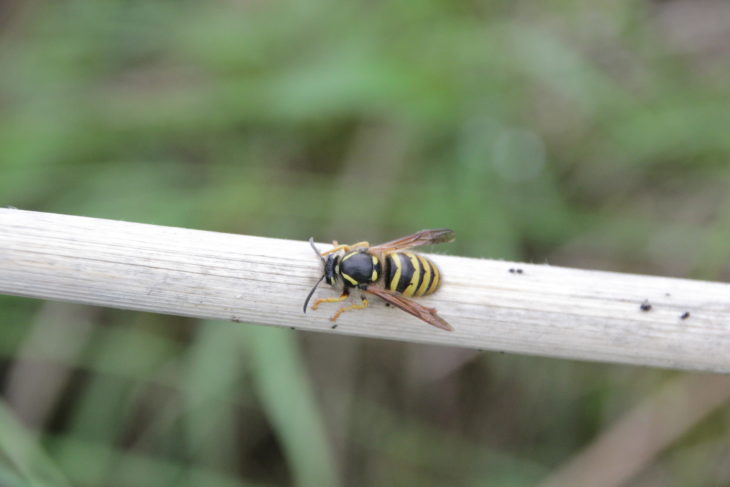Wasps… what are they good for?
,

It’s that time of year again. You might be enjoying a picnic, eating your lunch in the town centre, or relaxing with a cup of tea in the garden. Before long you’ll catch sight of the dreaded black and yellow stripes of a wasp coming to see what you’re up to.
A question we’re often asked at this time of year is just what are wasps good for? Wouldn’t the world be a better place without them?
The answer to that is simple. No!
There are actually thousands of different species of wasp in the UK. Some are tiny, most are solitary – and you probably don’t even notice them all around you. Only a few species fit the usual description, large and social, living in colonies of thousands, controlled by a queen. These wasps live complex, fascinating lives in their intricately constructed paper nests.
The common wasp, Vespula vulgaris, is a supreme predator hunting and eating many creatures we consider pests such as caterpillars, greenfly and flies- other species are important pollinators. A world without wasps would have many more flies and many fewer plants.
At this time of year, the wasp nests are full and they must constantly seek out new sources of sugar in order to feed the colony. That’s why they are interested in your sweet food and drinks. They don’t really want to sting you, they just want to share your meal.
Flying insect species in general are having a really hard time, their numbers are down almost across the board. Maybe its time we learned to appreciate the beauty of what we have before its gone forever.
If you want to get involved with helping Cumbernauld’s flying insects then why not join one of our volunteer groups?
Paul Barclay, Community Networks Officer
